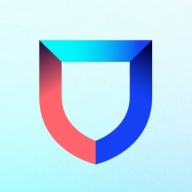

CoreOS Clair and Lacework FortiCNAPP compete in cloud-native security. Lacework FortiCNAPP seems superior due to its comprehensive feature set and perceived value.
Features: CoreOS Clair offers robust open-source vulnerability scanning, focusing on container security with excellent integration options. Lacework FortiCNAPP provides a broader scope of features including workload protection, compliance management, and threat detection.
Ease of Deployment and Customer Service: CoreOS Clair is noted for its simple installation process, especially useful for those familiar with open-source tools, offering community-backed support. Lacework FortiCNAPP offers a detailed deployment model and professional customer support, which might require more setup time.
Pricing and ROI: CoreOS Clair provides a cost-effective solution for organizations emphasizing container security with a favorable ROI for its open-source approach. Lacework FortiCNAPP, potentially more expensive upfront, delivers strong ROI through its extensive cloud security features, attractive to businesses needing a comprehensive security posture.
| Product | Market Share (%) |
|---|---|
| CoreOS Clair | 0.6% |
| Lacework FortiCNAPP | 1.9% |
| Other | 97.5% |


| Company Size | Count |
|---|---|
| Small Business | 4 |
| Midsize Enterprise | 4 |
| Large Enterprise | 3 |
Clair is an open source project for the static analysis of vulnerabilities in appc and docker containers.
Vulnerability data is continuously imported from a known set of sources and correlated with the indexed contents of container images in order to produce lists of vulnerabilities that threaten a container. When vulnerability data changes upstream, the previous state and new state of the vulnerability along with the images they affect can be sent via webhook to a configured endpoint. All major components can be customized programmatically at compile-time without forking the project.
Lacework FortiCNAPP provides robust cloud security, combining vulnerability management and multi-cloud insight with user-friendly controls, machine learning detection, and compliance support.
Lacework FortiCNAPP specializes in cloud security by merging machine learning anomaly detection with agent-based vulnerability management to offer detailed alerts and compliance reports. Its comprehensive approach allows continuous monitoring across AWS and Kubernetes, providing insights from an attacker's perspective. The platform offers automation and seamless Slack integration, facilitating collaborative and efficient cloud security management. Users value its ability to handle multi-cloud environments and scan IAC scripts, configurations, and compute nodes across AWS and GCP.
What are the key features?Organizations across sectors leverage Lacework FortiCNAPP for cloud security, focusing on compliance, security posture, and vulnerability management. It is widely used for monitoring AWS and Kubernetes environments, scanning IAC scripts, configurations, and securing compute nodes. It supports multi-cloud security posture management and log ingestion, enabling companies to maintain strong cloud infrastructures without dedicated security layers.
We monitor all Container Security reviews to prevent fraudulent reviews and keep review quality high. We do not post reviews by company employees or direct competitors. We validate each review for authenticity via cross-reference with LinkedIn, and personal follow-up with the reviewer when necessary.